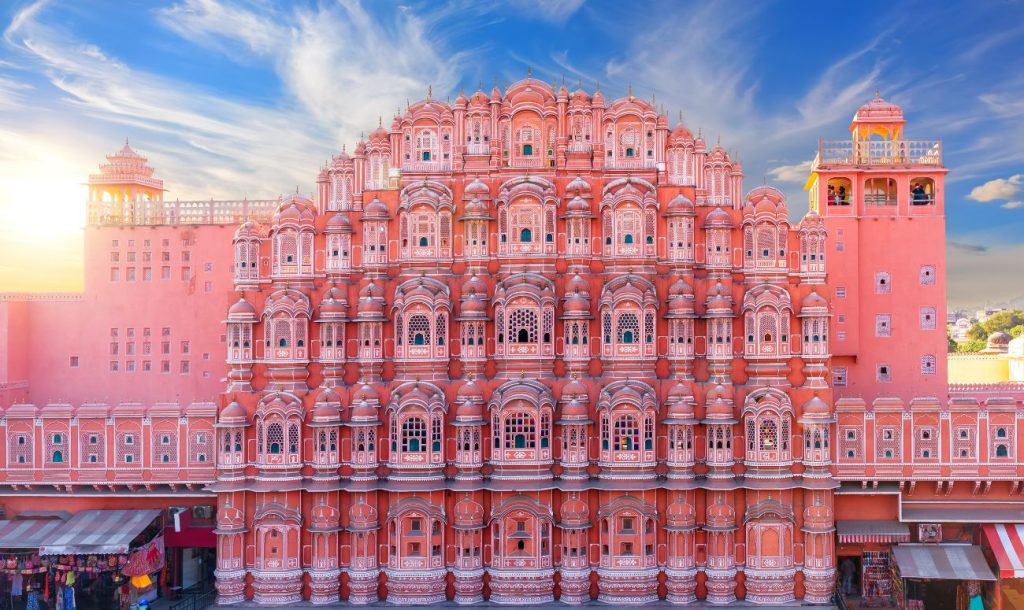The 18th of April is recognised worldwide as World Heritage Day, also known as the International Day for Monuments and Sites. This day is honoured differently all across the world with events including conferences, roundtable discussions, visiting monuments and historical places, and newspaper articles. We’re marking the day by celebrating all the heritage sites in India that make our country an iconic one.
The United Nations Educational, Scientific, and Cultural Organization honoured the day for the first time in 1983. (UNESCO). During the 22nd UNESCO General Session, it was designated as a global event. The purpose of this day is to raise awareness of the diversity and cultural heritage of people around the world.
Several locations with cultural and natural significance were recognised by the UNESCO World Heritage Convention, which was formed in 1972. India now holds 40 World Heritage Sites, placing it sixth in the world. According to UNESCO, there are 32 cultural sites, 7 natural sites, and 1 mixed site.
40 Iconic Heritage Sites In India That Are Listed Under UNESCO World Heritage Sites
1. Taj Mahal, Agra
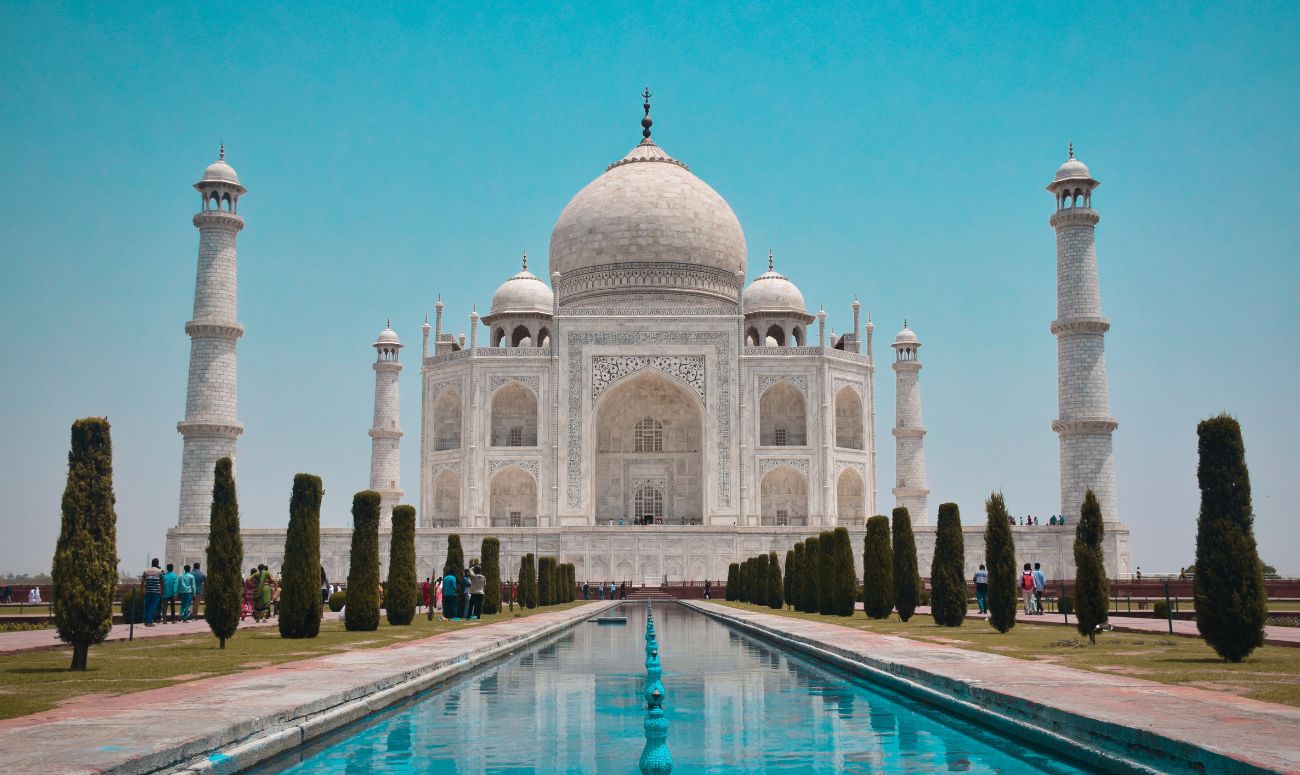
In 1983, India’s Taj Mahal, one of the Seven Wonders of the World, was named a UNESCO World Heritage Site. A magnificent landscape surrounds this beautiful white marble tomb on the Yamuna River’s banks. In honour of his adored wife, Mumtaj Mahal, the Mughal emperor Shah Jahan constructed it in the 17th century.
2. Agra Fort, Uttar Pradesh
Another noteworthy structure constructed by the Mughals is the Agra Fort, which is situated close to the well-known Taj Mahal on the right bank of the River Yamuna. It was included on the UNESCO World Heritage list in 1983 and is frequently referred to as the Red Fort of Agra. This architectural marvel was built in 1573, during the reign of Emperor Akbar, and it housed the Mughal emperors until 1638. This stunning mediaeval structure, also known as Red Fort and Lal Qila, is composed entirely of red sandstone. The elaborate wall art displays the well-known Mughal architectural style.
3. Hampi, Karnataka
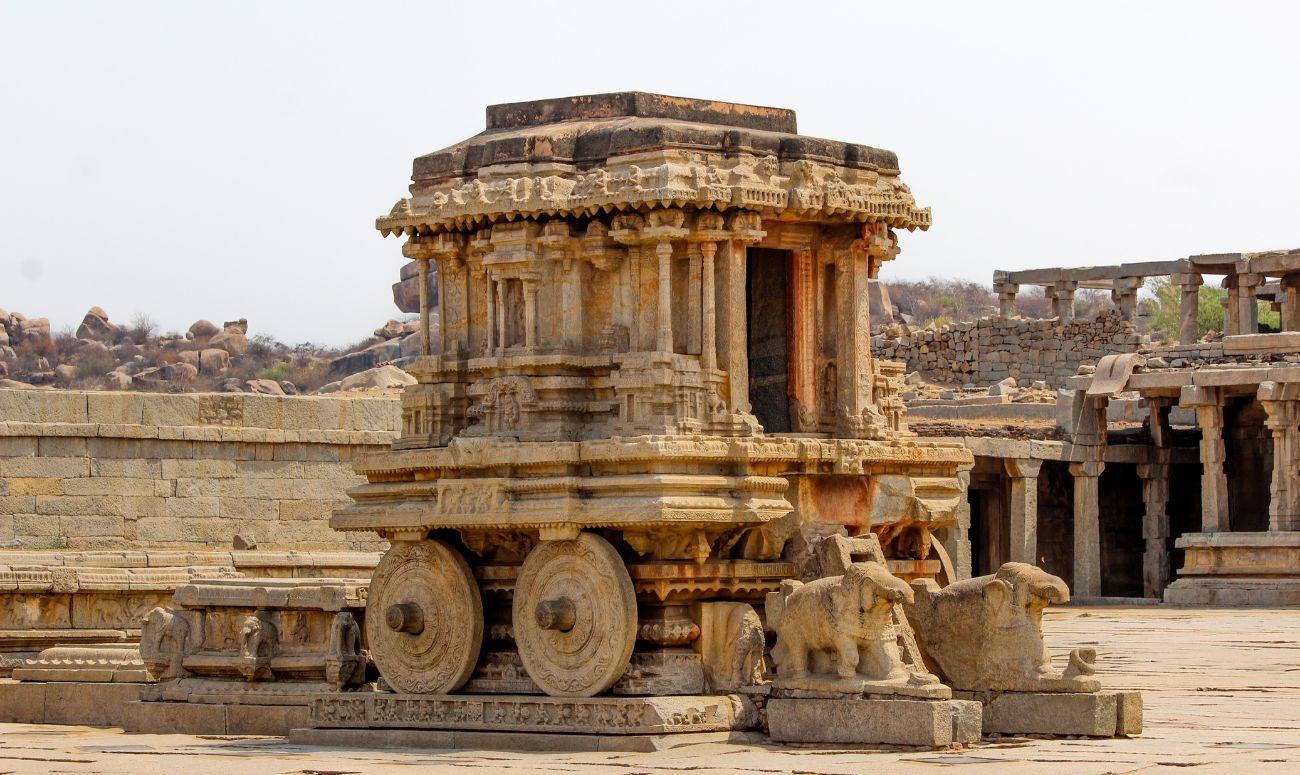
This UNESCO World Heritage site called Hampi is situated in Karnataka’s northern region. It is located among the remains of the long-gone, thriving kingdom of Vijayanagar. The Hampi ruins are a collection of historic locations that showcase Dravidian art and architecture. The Virupaksha Temple, which is still an important Hindu holy site, is the site’s most noteworthy heritage landmark. This cultural site has a number of additional monuments; collectively, they are referred to as the “Group of Monuments at Hampi.”
4. Fatehpur Sikri, Uttar Pradesh
Fatehpur Sikri, a modest but significant town in the Agra District, was included in the list of India’s UNESCO World Heritage Sites in 1986. The Mughal Emperor Akbar constructed it in 1571 as a memorial to Sheikh Salim Chisti, a revered Sufi saint. One of the best displays of Emperor Akbar’s building skill is this Indo-Islamic masterpiece. With a distinctive fusion of Hindu and Islamic features, the architecture and design of the buildings excite tourists and enthusiasts of the building design.
5. Ajanta Caves, Maharashtra
The site was designated as a UNESCO site in India in 1983 and is now maintained by the Archaeological Survey of India. The construction of these prehistoric caverns occurred in two stages, the first beginning of the second century and the second from 400 to 650 CE. About 101 kilometres separate Aurangabad from Ajanta Caves. Many historic monasteries and chapels are known to have been housed in these caves. The artwork on their walls shed light on Lord Buddha’s births and previous incarnations.
5. Ellora Caves, Maharashtra
A well-known ancient monument and World Heritage site in India, the Ellora Caves are located 29 kilometres northwest of the city of Aurangabad. Indian-rock-cut architecture is very well known for the Ellora Caves. The approximately 34 rock-cut temples and caves, which date from roughly 600 to 1000 AD, are crucial for studying the way of life at the time. The fact that there are Hindu, Buddhist, and Jain temples shows how different faiths and beliefs were accepted in ancient Indian history.
6. Bodh Gaya, Bihar
Bodh Gaya is situated almost 96 kilometres from Patna, Bihar. As the location of Mahatma Buddha’s enlightenment, it is a significant sacred site for Buddhists. Siddhartha attained Enlightenment and transformed into Gautam Buddha under the revered Bodhi Tree. In roughly 250 BCE, during Ashoka the Great’s rule, the renowned Mahabodhi Temple was built. It’s among the first Buddhist temples.
7. Elephanta Caves, Maharashtra
The Elephanta Caves, often referred to as Gharapurichi Leni, are a collection of carved cave temples, many of which are devoted to Lord Shiva. They date from sometime between the fifth and eighth centuries, are located around 25 kilometres from Bombay, and are renowned for their magnificent rock-cut architecture. There are two separate clusters of caves here: the first is a sizable collection of five Hindu caves, and the second is a pair of Buddhist caves. They contain a large number of rock-cut stone sculptures, such as the Shiva and Parvati on the Kailash statue, Ravana raising the Kailash Mountain, the Trimurti, or three different incarnations of Lord Shiva, the Ardhnareshwar, or Shiv ji and Parvati within a single body, and the Shiva Linga.
9. Sun Temple, Konark, Odisha
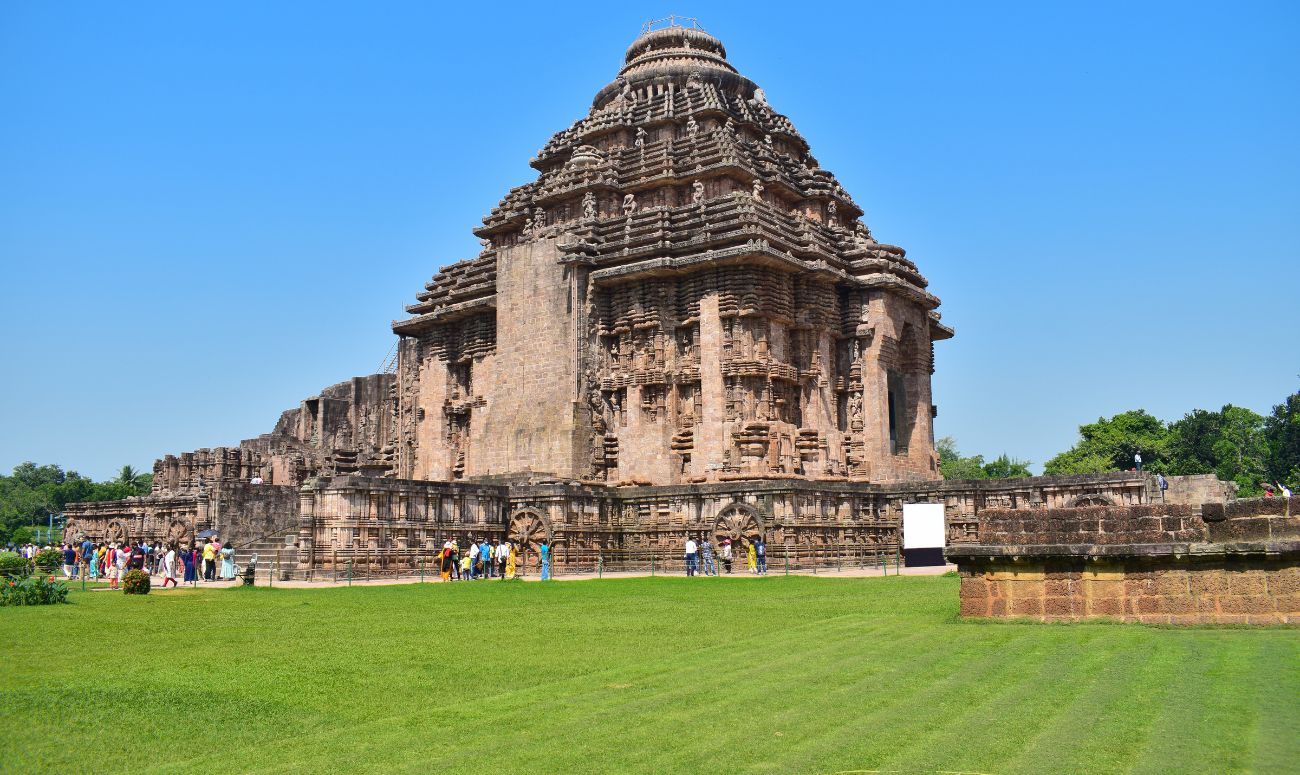
The Sun Temple is a 13th-century temple located in Konark, Odisha, not far from the renowned seaside town of Puri. About the year 1250 AD, King Narasimhadeva I of the Eastern Ganga Dynasty constructed it. The Sun Temple is shaped like a massive carriage, complete with carved stone walls, pillars, and wheels, and it is drawn by six massively sculpted horses. It is also regarded as India’s biggest Brahmin sanctuary. The temple was allegedly initially constructed at the mouth of the Chandrabhaga River, but the water level has since risen. This Indian World Heritage Site showcases the splendour of the then-dominant Kalinga architectural heritage.
10. Red Fort, Delhi
The Red Fort, which is located in the heart of the old city of New Delhi, was constructed by Emperor Shah Jahan when he moved his capital from Agra to Delhi, then known as Shahjahanabad. The Red Fort is the ideal illustration of how Mughal art and architecture peaked under Shah Jahan. Many aspects of the Red Fort showcase the merging of Indo-Islamic, Timurid, Hindu, and Persian architectural styles.
11. Chhatrapati Shivaji Terminus, Maharashtra
Chhatrapati Shivaji Terminal (CST), formerly Victoria Terminus, is a storied train station in Mumbai. One of the best examples of Victorian architecture in India, it was created by a British architect by the name of Frederick William Stevens. Although the terminus features aspects from the Italian and Victorian eras, the first impression will be of Indian palace-style architecture. As a result, Chhatrapati Shivaji Terminal can be described as a masterful fusion of indigenous and Western artistic traditions. The interiors are accented with premium quality Italian marble, with the exterior being primarily built of limestone and sandstone.
12. Sanchi, Madhya Pradesh
The oldest stone buildings in India are the Buddhist monuments in Sanchi, Madhya Pradesh, which represent Indian heritage. The Sanchi Stupa, which was built in the third century BCE on orders from Emperor Ashoka, is situated 46 kilometres to the northeast of Bhopal. Its central construction was a spherical brick building placed above Buddha relics, and the Chatra, a symbol of rank, was placed atop it. During the Satavahana Dynasty, the gateways and the railing were constructed and painted, the stupa was rebuilt after being vandalised in the second century BCE.
13. Victorian and Art Deco Ensembles of Mumbai, Maharashtra
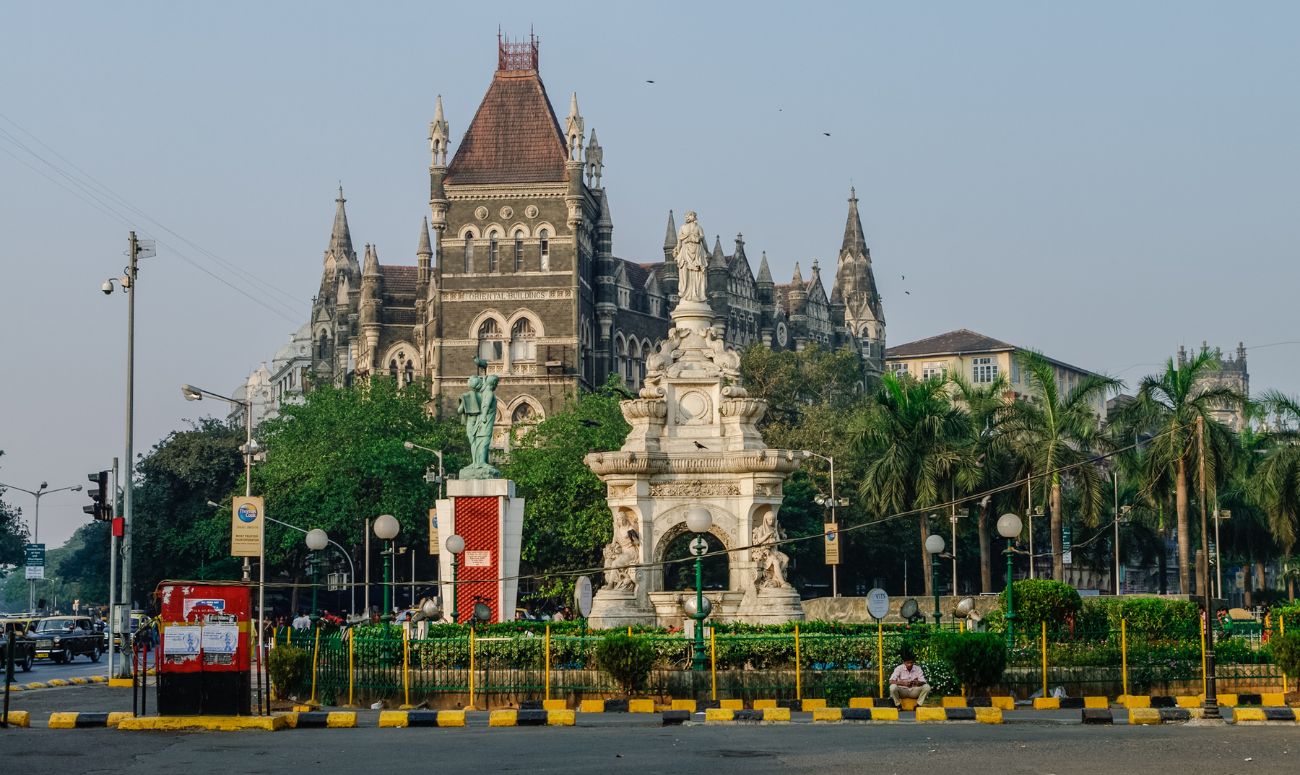
The Victorian and Art Deco Ensembles of Mumbai are a collection of Victorian neo-Gothic public buildings from the 19th century and Art Deco structures from the 20th century that are situated in the city’s Fort District. In 2018, these structures were added to India’s list of UNESCO World Heritage Sites. They surround the Oval Maidan, a huge recreation area.
14. Churches and Convents of Goa
The Churches and Convents of Goa have a number of noteworthy structures that were included in UNESCO World Heritage Sites in India in 1986. Basilica do Bom Jesus, Saint Catherine’s Chapel, Igreja de Sao Francisco de Assis, the Church and Convent of Saint Francis of Assisi, the Church of Saint Augustine, and the Church of Our Lady of the Rosary are a few examples. In the 15th and 16th century, the Portuguese first set foot in Goa, and they dominated the united area for more than 450 years. Also, they spread Christianity throughout India, including Goa. As a result, Goa is home to numerous churches and convents, all of which have beautiful architecture, artwork, and sculpture.
15. Khajuraho Group of Monuments, Madhya Pradesh
A collection of Hindu and Jain temples featuring the Nagara architectural style can be seen at this heritage site. Between 950 and 1050 CE, Chandela kings built these elaborate temples. In the 12th century, there were over 85 temples dispersed across an area of 20 square kilometres, but only about 20 of those structures were able to withstand the passage of time. Particularly well-known for their erotic sculptures and figures honouring dancing, music, and sensuality are the Khajuraho Group of Monuments. Also, the 10% of sculptures that are here depict sensual themes in an incredibly beautiful way.
16. Kaziranga Wildlife Sanctuary, Assam
Assam’s Kaziranga Wildlife Sanctuary is one of India’s last unspoiled wilderness places and is famous for its one-horned rhinoceroses. It is reported that Lord Curzon started the project to create this World Heritage Site in India after his wife begged him to take action to conserve this endangered species after failing to sight a single rhinoceros in the area. This park is located on the Brahmaputra River’s flood plains and is primarily made up of lush grasslands, woods, lakes, and streams. About 15 endangered Indian animal species can be found in Kaziranga, with the rhinoceros being the most endangered.
17. Rock Shelters of Bhimbetka, Madhya Pradesh
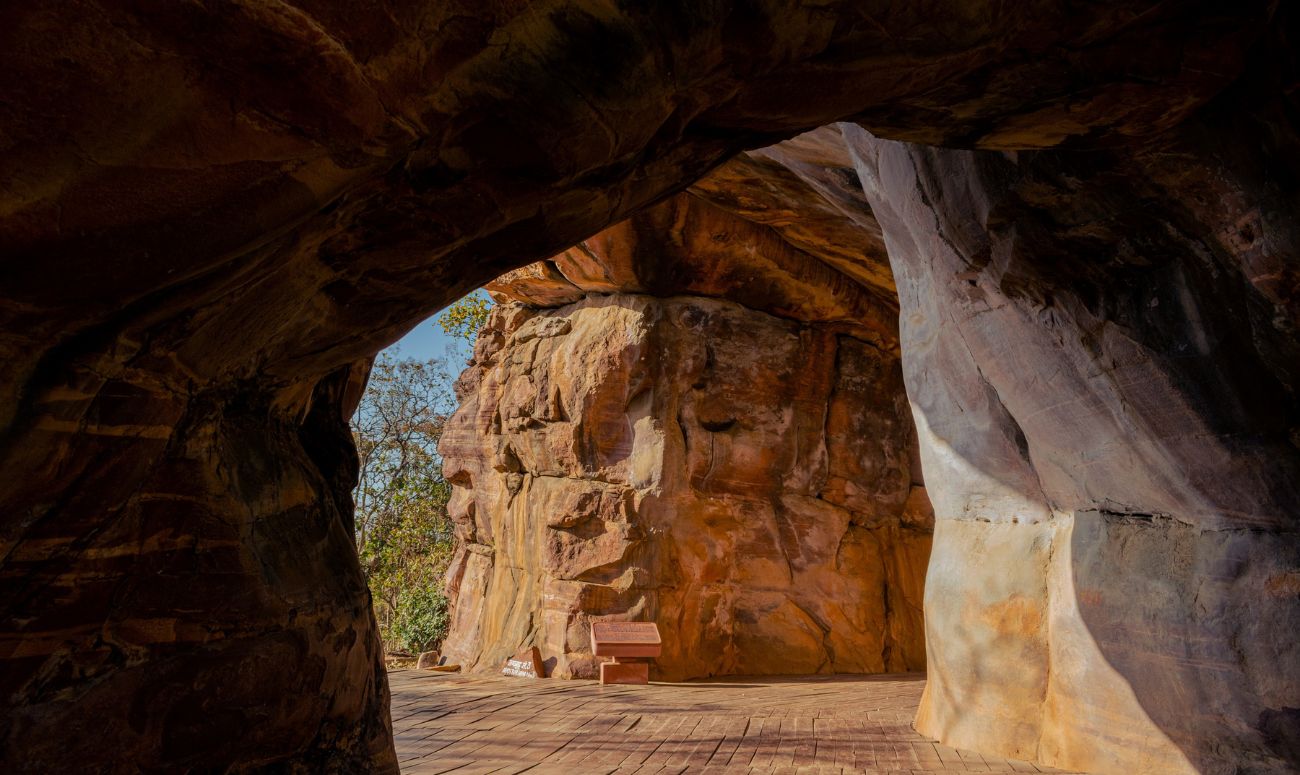
The Rock Shelters of Bhimbetka, which are situated in the Vindhyachal Mountains’ foothills, were included on India’s list of UNESCO World Heritage Sites in 2003. Here is where the South Asian Stone Age originated, as determined by the Archaeological Survey of India. Humans reportedly lived in the rock shelters until the second century BCE. Although a group of archaeologists found these shelters in 1957, it wasn’t until the 1970s that their magnitude and actual significance were revealed. This location includes five groups of rock shelters with artwork from the Mesolithic (c. 10000–8000 BC) era on them.
18. Humayun’s Tomb, New Delhi
One of the Mughal structures in the nation with the highest preservation is Humayun’s Tomb, which dates to the 16th century. Empress Bega Begum, the wife of Emperor Humayun, established it as a memorial to her husband. This well-known mausoleum, the first garden-tomb in the region, was included in India’s list of UNESCO World Heritage Sites in 1993. Together with the graves of many other Mughals, including Dara Shikoh, the son of Emperor Shah Jahan, and Empress Bega Begum, the complex also contains the primary tomb of Emperor Humayun.
19. Qutub Minar, New Delhi
Qutub Minar, which was built at the start of the 13th century, and the monuments that surround it were added to India’s list of UNESCO World Heritage Sites in 1993. The facility’s main draw is the Qutub Minar, which is situated in South Delhi. Qutub Minar is the tallest brick tower in the world, at 73 metres tall. One of the oldest buildings in the world and a remarkable example of Islamic architecture is this 800-year-old Minar. Its construction of red sandstone and marble, which features exquisite carvings and patterns, is unique.
20. Group of Monuments at Mahabalipuram, Tamil Nadu
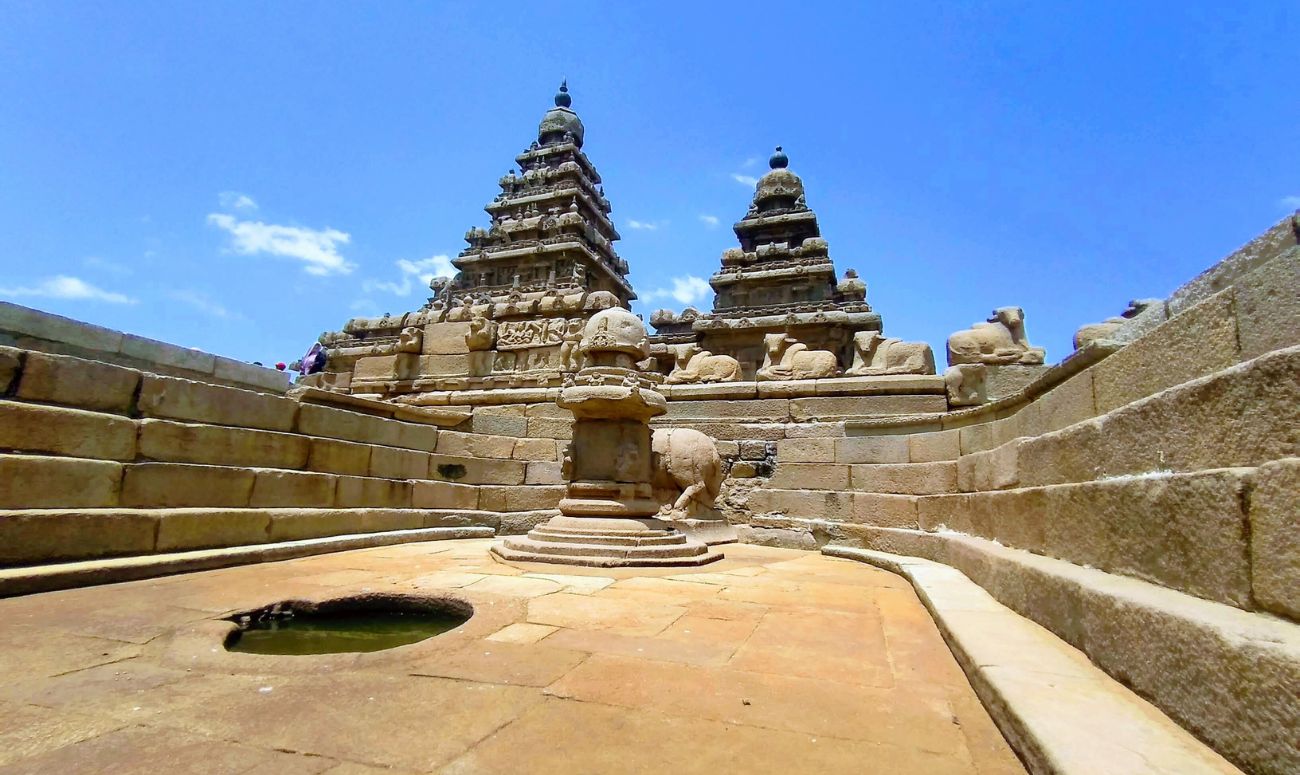
The Temples are located in Mahabalipuram, which is a town on the Coromandel Coast of the Bay of Bengal, about 58 kilometres from Chennai. These temples were constructed under the Pallava monarchs’ control, and their distinguishing feature is that they are entirely carved out of rock, making them significant for Ratha architecture in India. 40 sanctuaries make up the monument group, including the largest open-air bas-relief, such as Ganga’s Descent.
21. Jantar Mantar, Rajasthan
The Jantar Mantar in Jaipur is renowned for being the biggest stone astronomical observatory in the world. It was constructed by Maharaja Sawai Raj Singh II in the early 18th century. The fact that this observatory was decades ahead of its time is remarkable. It has a clever design and the equipment is positioned so that viewers may see celestial bodies with their own eyes. There are 19 artificial astronomy instruments in all at Jantar Mantar. The Samrat Yantra, the largest sundial in the world, is also located here.
22. Jaipur City, Rajasthan
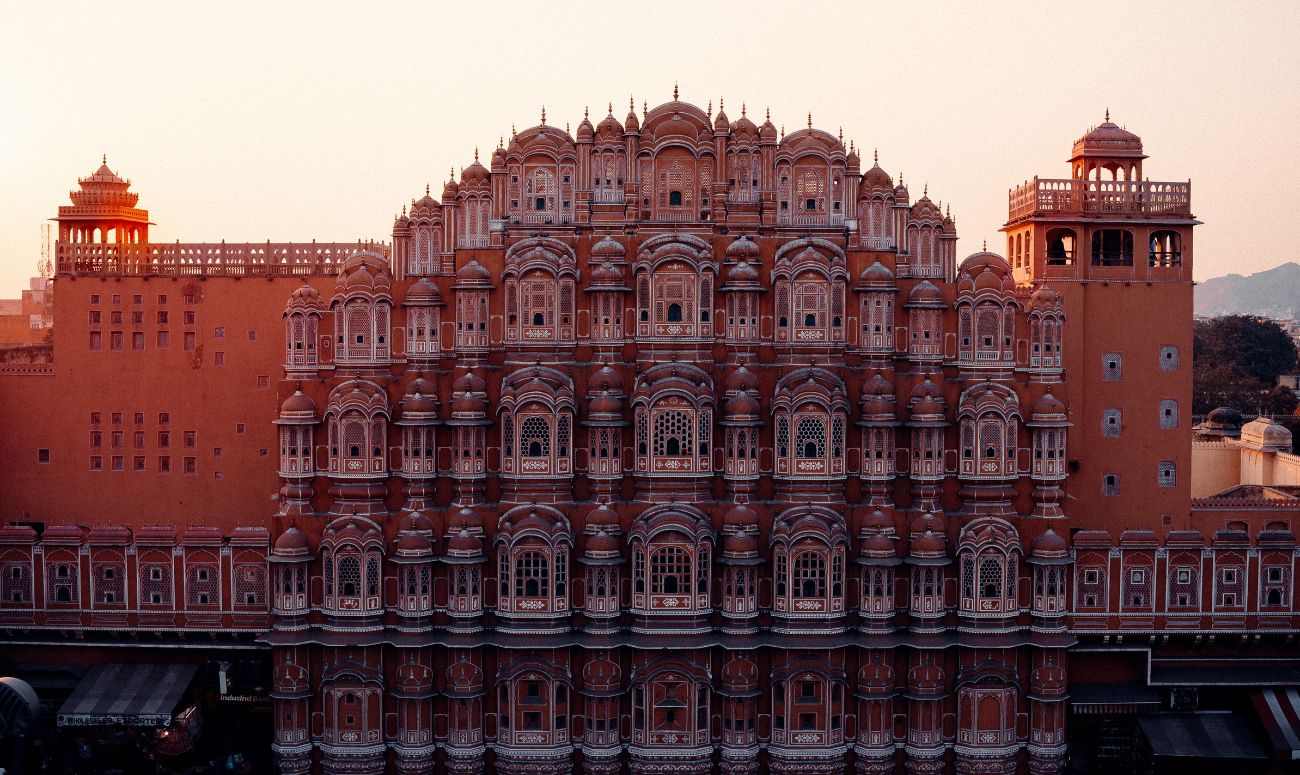
The Pink City of Jaipur was designated a cultural heritage site in 2019, adding it to the list of UNESCO World Heritage Sites in India. This stunning city has a rich royal history, stunning architecture, and vibrant culture. There are some of the most incredible palaces, forts, and havelis scattered around that will transport you back in time. The buildings display an outstanding fusion of European and Rajput, Mughal, and Deccan architectural traditions. City Palace, Jantar Mantar, Hawa Mahal, Amber Fort, Jaigarh Fort, and Nahargarh Fort are a few well-known examples. Bright bazaars like Johri Bazar, Bapu Bazaar, and Badi Chaupar are well-known in the Pink City. These neighbourhood bazaars, which sell exquisite Rajasthani jewellery, handicrafts, fabrics, and many other goods, are a shopaholic’s dream come true.
23. Sundarban National Park, West Bengal
The Sunderban National Park is a well-known Tiger reserve and a Biosphere Reserve based in the Indian state of West Bengal and is well-known for the Royal Bengal Tigers. It is located on the Sunderban Deltas, which the Ganges River in the Bay of Bengal created. One of India’s largest reserves, it is primarily covered in deep mangrove forests. It is the biggest mangrove forest reserve in the world.
24. Hill Forts of Rajasthan
The Hill Forts of Rajasthan, which are placed atop the untamed Aravalli Mountains, were named UNESCO World Heritage Sites in India in 2013. There are six imposing forts in this group: the Chittor, Amer, Kumbhalgarh, Gagron, Ranthambore, and Jaisalmer forts. During the fifth and eighteenth centuries CE, a number of Rajput monarchs constructed these magnificent buildings.
Each fort was constructed with high-tech construction methods and exhibits a style of Rajput army hill architecture with substantial defences.
25. Rani ki Vav, Gujarat
It was constructed in the third millennium BC in the monarchs’ honour and is a clear example of exquisite Ancient Indian architecture. Legend has it that when the Solanki dynasty was in power, Bhimdev 1, the family’s first ruler, was widowed, and the widowed queen Udayamati constructed the monument in his honour and memory. Due to the beauty and wonder of its architecture, it was just recently named a UNESCO World Heritage site. Stepped Corridors, Sculptures, and Stone Carvings in the Well make Rani-ki-vav famous.
26. Group of Monuments at Pattadakal, Karnataka
Karnataka’s Pattadakal is a major tourist destination and a UNESCO World Heritage Site. It is renowned for the Chalukya style of architecture, which emerged in Aihole and was combined with Nagara and Dravidian architectural elements. All of the Chalukya monarchs were crowned at Pattadakal, which also served as their capital. There are eight temples devoted to Lord Shiva as well as Jain and Shaivite sanctuaries in this area, which is notable for the many temples the Chalukya kings built.
27. Kakatiya Rudreshwara Temple, Telangana
In India, Kakatiya Rudreshwara Temple, one of the most recent additions to the list, was named a UNESCO World Heritage Site in 2021. The Ramappa Temple is another name for this stunning sandstone structure. The temple was built in 1213 AD, during the reign of Recharla Rudra, a general of Ganapati Deva, the Kakatiya ruler. The principal deity in this temple, which is devoted to Lord Shiva, is a 9-foot Shivalinga. The temple, which is 6 feet tall, displays exquisite craftsmanship and Vesara style architecture.
28. Great Living Chola Temples, Tamil Nadu
The Chola Temples in the southern region of India are renowned for their exceptional art and architecture. They were constructed by the monarchs of the Chola dynasty between both the 11th and 12th century. The area, which has three temples, was included to the list of India’s UNESCO World Heritage Sites in 1987. The Brihadisvara Temple in Thanjavur, the Brihadisvara Temple in Gangaikonda Cholapuram, and the Airavatesvara Temple in Darasuram are the three Great Living Chola Temples. Despite the fact that all three are temples for Lord Shiva, their architectural styles set them apart from one another.
29. Mountain Railways of India
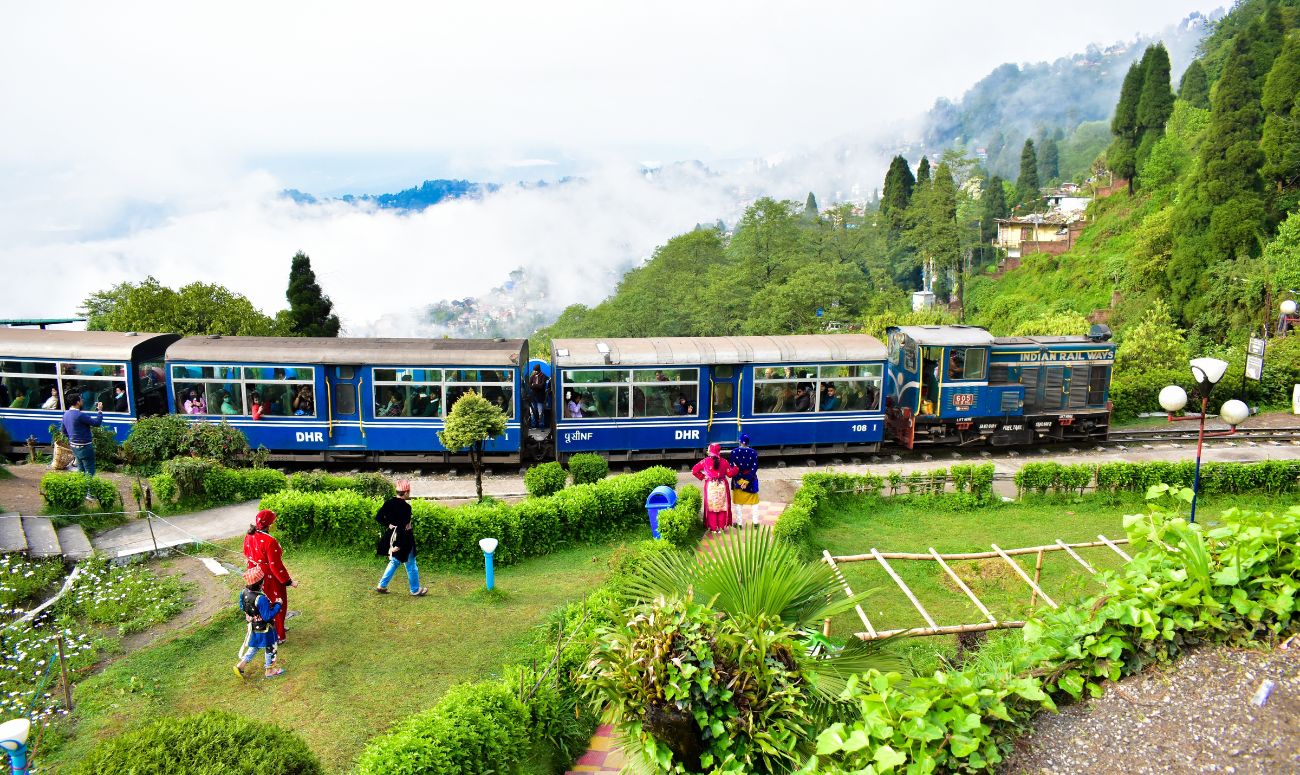
The Darjeeling Himalayan Railway, the Nilgiri Mountain Railway, and the Kalka-Shimla Railway are three of India’s mountain railways and are included on the country’s list of World Heritage Sites. One of the most breathtaking natural temptations on Earth is found in North Bengal. Your pleasure will be catered to by the entertaining Toy Train, lovely Tea Plantations, extensive tunnels, and the Tiger Hills. These engineering wonders, which were constructed in the late 19th and early 20th centuries, are a priceless piece of India’s past and offered a daring and creative solution to the connectivity issue in the challenging highlands.
30. Archaeological Site of Nalanda Mahavira in Nalanda, Bihar
Nalanda Mahavihara, which is around 83 kilometres from Patna, was added to India’s 2016 list of UNESCO World Heritage Sites. The location is well-known for preserving the archaeological remnants of a Buddhist monastery and academic institution that dated from the third century BCE to the thirteenth century CE. Stupas, viharas, shrines, and significant works of art made of metal, stone, and stucco can all be found here. Nalanda Mahavihara was renowned for being the oldest university on the Indian subcontinent and consistently disseminated knowledge for more than 800 years.
31. Champaner-Pavagadh Archaeological Park, Gujarat
Champaner-Pavagadh Archaeological Park, a heritage site harbouring various architectural marvels, is located in the Panchmahal district of Gujarat. This park is lined with forts that extend from the Pavagarh Hills to Champaner City. The park’s topography contains all of them, including a hill fort, chalcolithic sites, palaces, and gateways in addition to temples, mosques, residential complexes, step wells, and agricultural constructions.
32. Historic City of Ahmedabad, Gujarat
The mediaeval city of Ahmedabad, which has a rich and distinctive legacy, was added to India’s list of UNESCO World Heritage Sites in 2017. The first Indian city to receive the heritage designation is Gujarat’s capital. The walls and gates of the fort city, the Bhadra Citadel, many mosques and tombs, Hindu and Jain temples, and other sultanate structures were all praised by UNESCO for their sultanate architecture. On the banks of the Sabarmati River, Ahmedabad was established in 1411 by Ahmed Shah I of the Gujarat Sultan.
33. Dholavira, Harappan City
The Harappan city of Dholavira throughout the Rann of Kutch is a magnificent and well-preserved urban community in South Asia and was inscribed as a UNESCO World Heritage Site in India in 2021. The location, which archaeologist Jagat Pati Joshi found in 1968, has remnants of the historic Indus Valley Civilization. Dholavira, the fifth greatest of the eight Harappan sites, is thought to have been inhabited between 3000 and 1500 BCE. The city of Dholavira, which covers an area of 22 hectares, was planned with entrances, street systems, fortifications, wells, sizable open spaces, and more.
34. Western Ghats
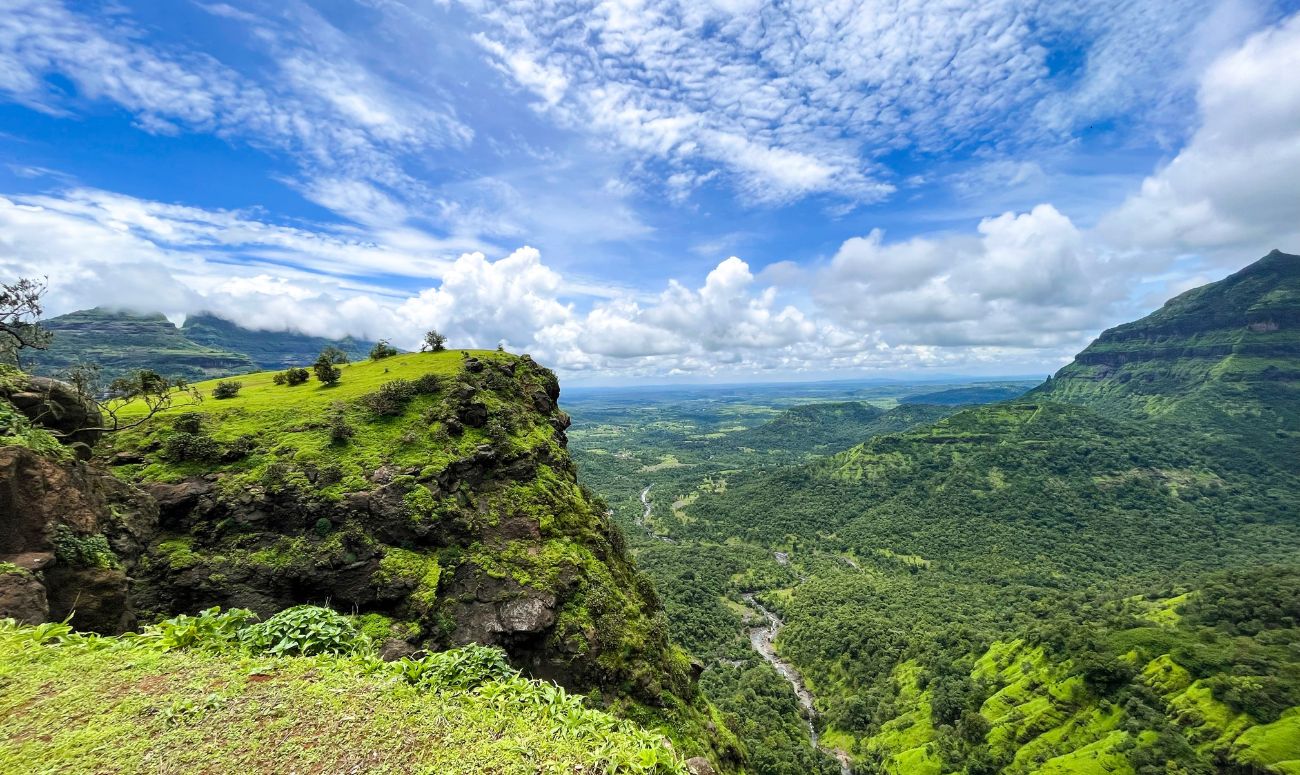
Along the western shore of the Indian Peninsula are the Western Ghats or Sahyadri mountain ranges. Around the western edge of the Deccan Plateau, The Range stretches north to south. In Kerala, Karnataka, Tamil Nadu, and Maharashtra, it consists of numerous national parks, reserve forests, and wildlife sanctuaries. The hills have a total size of 160000 square kilometres, are 1600 kilometres long, 100 kilometres wide, and 1200 metres high. It is one of the top 8 biological hot spots in the world and has a very high biodiversity.
25. Nanda Devi and Valley of Flowers National Park, Uttarakhand
One of the most incredible wilderness places in the Himalayas is Nanda Devi National Park, which lies close to Nanda Devi, the second-highest Himalayan peak in India. This charming and picturesque ecosystem, which spans 630 square kilometres, is renowned for its biodiversity because of the variety of uncommon and unusual plants and animals that can be found here. The national park is home to various kinds of creatures, including birds, animals, plants, trees, and butterflies. Valley of Flowers, which spans an area of 87 sq. km., is renowned for its breathtaking meadows of indigenous alpine flowers. The breathtaking Himalayan peaks serve as the park’s backdrop, providing mystical views.
36. Khangchendzonga National Park, Sikkim
Its official name is Kanchenjunga National Park, and in 2016 it was added to India’s list of UNESCO World Heritage Sites. The national park has a total area of 850 square kilometres and ranges in elevation from 1829 metres to approximately 8550 metres. It has a distinctive assortment of valleys, plains, glaciers, lakes, and snow-capped, forested mountains. The third-highest mountain in the world, Mount Kanchenjunga, is also a component of a national park. Khangchendzonga National Park is home to a diverse array of rare and endemic plant and animal species. The park also contains a variety of medicinal and herbal plants in addition to oak, birch, maple, willow, and fir.
37. Great Himalayan National Park, Himachal Pradesh
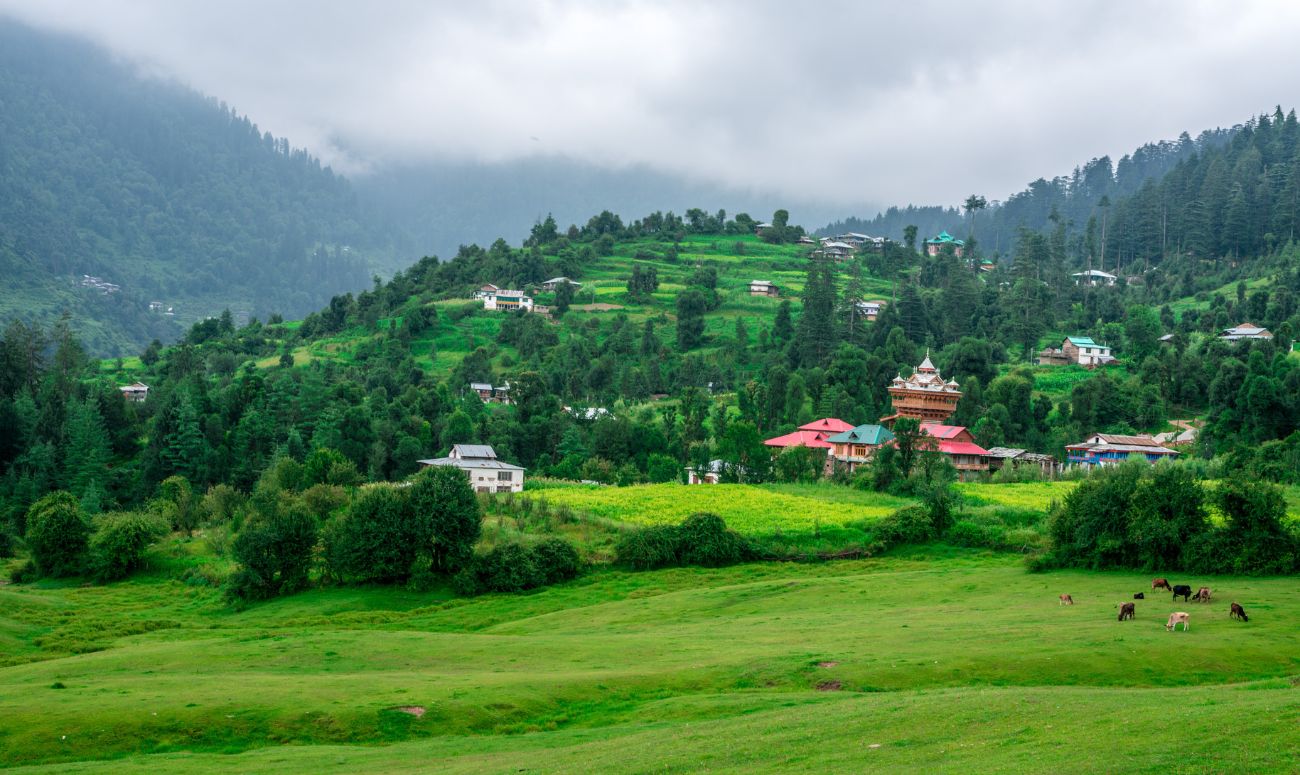
The Great Himalayan National Park (GHNP), located in Himachal Pradesh’s Kullu area, is a haven for a remarkable array of flora and fauna. It features 375 species of plants, over 180 species of birds, 30 species of animals, and more. Some of the endangered species found here are the Himalayan brown bear, white-bellied musk deer, blue sheep, and the western tragopan. One of the most beautiful national parks in the nation, this one is distinguished from others by its alpine meadows, alpine peaks, and riverine woods.
38. Keoladeo National Park, Rajasthan
Keoladeo National Park, often referred to as Bharatpur Bird Sanctuary is home to about 350 varieties of birds, 380 different plant species, 50 different fish species, and about 30 different types of mammals. In 1985, UNESCO designated the birding haven as a World Heritage Site. The national park’s terrain, which spans a total of 2783 hectares, is made up of a mix of marshes, dry grasslands, and wooded swamps. When 364 species of wintering birds from Turkmenistan, Afghanistan, China, and Serbia migrate here in huge numbers throughout the winter, the national park becomes especially beautiful.
39. Manas Wildlife Sanctuary, Assam
One of India’s UNESCO World Heritage Sites is the protected wildlife sanctuary known as Manas Wildlife Sanctuary. It is situated in the Assam region of northeastern India. The name is derived from the name of the goddess Manasa and comes from the River Manas. The numerous endangered species of animals that live here are comfortable because to the area’s beautiful green hills covered in forest and its dense flora. The Assam Roofed Turtle, Golden Langur, and Pygmy Hog are just a few of the endangered animals that call The Wild Life Sanctuary their home. It is also a Project Tiger Reserve, Elephant Reserve, and Biosphere Reserve.
40. The Architectural Work of Le Corbusier, an Outstanding Contribution to the Modern Movement

The 17 locations that make up this international serial property, which is drawn from Le Corbusier’s oeuvre and is dispersed throughout seven nations, are a testament to the creation of an innovative architectural language that broke with tradition. They were constructed over a fifty-year period as part of just what Le Corbusier called “patient research.” The National Museum of Western Art in Tokyo, the House of Dr. Curutchet in La Plata, Argentina, the Complexe du Capitole in Chandigarh, India, the Unité d’habitation in Marseille, France, and other structures are examples of how the Modern Movement attempted to address the problems of developing new architectural methods to meet societal needs during the 20th century.
Read More: 7 Best Indoor Plants To Improve Your Health And Home
Like & Follow ThinkRight.me on Facebook, Instagram, Twitter, Pinterest and Telegram to stay connected.
